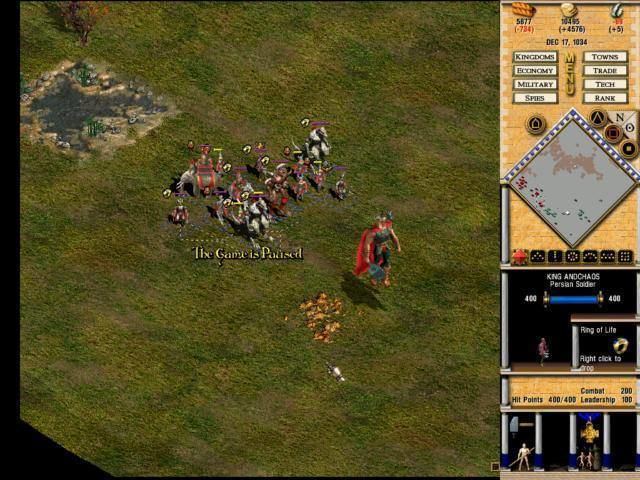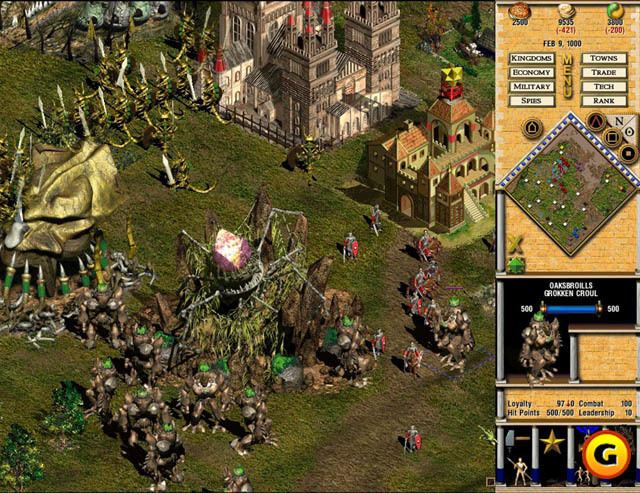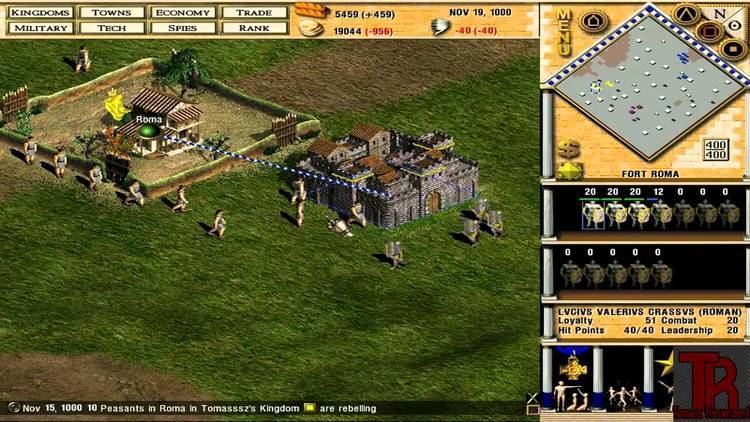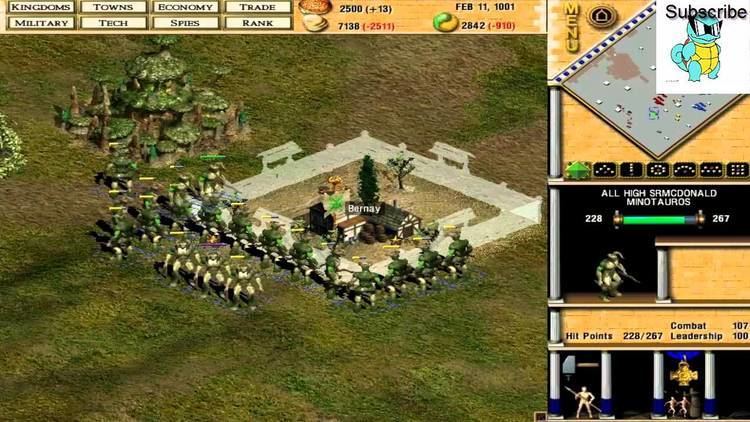8.4 /10 1 Votes8.4
9/10 Steam Genre(s) Real-time Strategy Designer Trevor Chan | 3.9/5 GOG 8.6/10 IGN Initial release date 31 July 1999 | |||||||||||||||||||||||||||||||||
 | ||||||||||||||||||||||||||||||||||
Mode(s) Single player, Multiplayer Publishers Ubisoft, Interactive Magic Similar Enlight Software games, Real-time strategy games | ||||||||||||||||||||||||||||||||||
Seven Kingdoms II: The Fryhtan Wars is a history-fantasy real-time strategy computer game developed by Enlight, released in 1999. Seven Kingdoms II is the sequel to the original Seven Kingdoms game and its updated re-release Seven Kingdoms: Ancient Adversaries.
Contents
- Lp seven kingdoms ii ep 1 lizardfolk
- Gameplay
- The Economy
- Civilizations
- Human nationalities
- Frythan species
- Open source project
- Seven Kingdoms 2 HD
- References

Lp seven kingdoms ii ep 1 lizardfolk
Gameplay
Fryhtan Wars retains a great deal of concepts from its predecessors that distinguished it from other strategy games.

As was in the original, players must seek to strike a balance between a powerful army for defeating enemy Kingdoms and Khwyzans and a viable economy for sustaining the former. The definitive marks of Seven Kingdoms: Ancient Adversaries (SKAA) recur in Fryhtan Wars (SKFW); Gold, Food, Reputation, Population, Loyalty, and Espionage. The human population may be subdivided for various tasks; to produce food, to build, to research, to spy, to work in mines and factories, or to conscript into the army.
The Economy

All units and structures have an annual maintenance fee in addition to the fixed cost of producing the unit or structure in the first place. The only exceptions to this are peasants and towns. This means that as a kingdom expands, the costs of maintaining the kingdom rise. When the kingdom's gold falls below 0, all buildings start to deteriorate and lose health, whilst generals become disloyal.

To balance this out, an annual tax is taken on all peasants that are in towns, regardless of their profession. This tax does not affect the town's loyalty level. However, if the treasury grows dangerously, additional taxes may be collected if there is a garrisoned fort nearby. This comes at the cost of incrementally increasing drops in loyalty, starting with 10 points.

The primary source of income for a Kingdom is in Markets. Natural resources are scattered across the map. There are three types natural resources: Iron, Copper, and Clay, which are processed into Ironware, Copperware, and Pottery. Kingdoms may construct mines upon these natural resources to extract them from the land, factories to process them into finished goods, and then markets to sell the goods to the people.

Markets may sell finished goods directly to towns nearby. A market has a maximum carrying capacity of 500 units of each type of good. If a market is full in one stock, or lacking in another, it is possible to exchange goods between markets so that neither one is deficient. This is facilitated through caravans, that appear as lone camels in the game. Caravans are slow but can carry up to 200 units at a time, hence when used in large numbers, can be very efficient.
Each unit and town (with the exception of the King and caravans) is given a loyalty rating that must be maintained. Units with loyalties below 30 may betray the kingdom whilst towns with loyalties below 30 may spawn rebels.
As was in the predecessors, the concept of espionage is a major factor in the game. Players can send spies into enemy kingdoms to steal technology, cause disloyalty and even assassinate enemy leaders. (Generals and Kings)
Fryhtan Wars also introduces several new gameplay elements. The amount of units and structures was greatly increased. For example, each human civilization now has three distinct units: civilian, infantry, and a special military unit (such as cavalry). Artifacts, which gives advantages to the bearer, can be found on the map or purchased from the Inn. In addition, there are heroes, units with high leadership or combat skills that can either be hired or attained when a hero decides to join the kingdom. Perhaps the greatest addition in Fryhtan Wars is the Fryhtans, fantasy-like beasts whose civilization are often at odds against the humans.
Both single player and multiplayer modes are available. The single player mode includes "random map" skirmishes, built-in scenarios, and a campaign game, which consists of a string of dynamically-generated scenarios.
Civilizations
Seven Kingdoms II includes 12 human civilizations and 7 Fryhtan species. Besides unique military units with slightly varying attributes, human kingdoms also have unique gods with special powers that the kingdom may evoke from "seats of powers" that also grant unique bonuses. Differences among the three "basic" unit types, the bonuses associated with each particular Seat of Power, and the Greater Beings that may be evoked distinguish the different nationalities. In addition to basic human units, human civilizations can also build a variety of siege weapons, including cannons, ballistae, and catapults. These siege units do not possess a combat score, hence they all carry the same effectiveness from the moment they are created until the moment they are destroyed. However, siege weapons cost more to maintain and create.
Human kingdoms focus on population, diplomacy and economy, whereas Fryhtan kingdoms (known as Kwyzans) focus directly on military units backed by a very simplistic economy, with almost no diplomatic options and with no espionage. Compared to humans who can build a plethora of structures, including mines, factories, forts, camps and war factories, most Fryhtan species can only build two structures: the lair which breeds more Fryhtans and an additional structure associated with the unique capabilities of the species. Fryhtan kingdoms rely on enslaving human towns, which provide them gold, and killing units, which provides "life force" necessary to breed more Fryhtans. Human kingdoms often contain multiple nationalities, and likewise Fryhtan kingdoms can also contain multiple species. Kingdoms with significant amounts of both humans and Fryhtans are possible, but difficult, because reputation will cause human townspeople to rebel. If either enemy soldiers surrender to you, enemy kingdoms surrender to you, or civilians surrender to you, you will be able to build Human buildings and train soldiers, specialty units, spies and other units/building exclusive to Human kingdoms. This will cause the food source of the kingdom to go down, as Fryhtan kingdoms start off with low food supplies, so creating a "Tower of Science" and researching "Advanced Farming" is highly suggested.
Human nationalities
Frythan species
Open source project
Enlight has released GPL source code in August 2009 for the original game Seven Kingdoms: Ancient Adversaries, and has done the same for Seven Kingdoms II. However, the game data will not be to be released under the GPL. Enlight says that it is still making a profit through digital sales of the game. In the open source project supported by Enlight found at www.7kfans.com, a goal of the project will be to write a common engine to both games. The original game CD for Windows will be required to install Seven Kingdoms II.
Seven Kingdoms 2 HD
On December 16, 2014, Enlight announced Seven Kingdoms 2 has been greenlit by Steam and they are working on an upgrade dubbed "Seven Kingdoms 2 HD". The upgraded version is said to support screen resolutions of up to 1920x1080 and introduce a new map mode that is 4 times as large as the original map. Although Enlight initially hoped to have the HD version implemented in two weeks, it was finally released on February 4, 2015.
